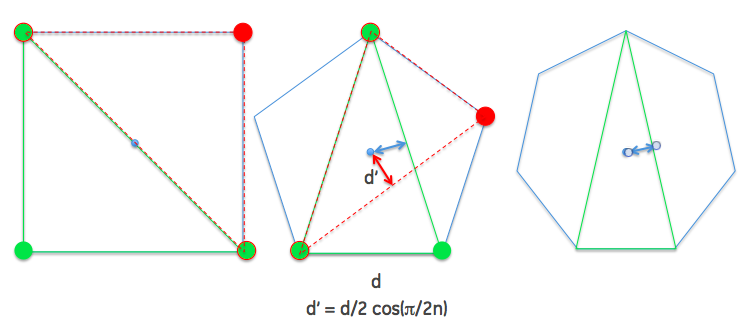Why does a computer/office chair have fives legs? Why does a chair have four?
Referenced from original Physics Stack Overflow Post:
When constructing a chair, 4 legs is easy when you use traditional (wooden) construction - 90 degree angles, and easy to make stackable. A little bit harder than three legs because you have to make sure they are all the same length (or the chair will wobble).
Once you have a “office chair” with a hydraulic center post, the construction argument goes away. That leaves us with greater freedom to pick number of legs. The considerations are:
- more legs = more material = more expensive, heavier (quantified below)
- more legs = tipping stability is more uniform in all directions
- more legs = better spread of the load: wheels don’t sink so far into the carpet
- odd number = greater stability against wobble (see below)
All engineering design is a question of tradeoffs; in this case, I think that the first point argues for fewer legs, and the second / third point for more legs. The question then becomes: what is the additional value, and the additional cost, of one more leg? Below, I calculate the cost of adding more legs for the same stability and cost - this makes some assumptions but concludes five is indeed optimal.
But there is another important factor (tip of the hat to my daughter for this concept): when the floor is uneven, a chair will be not be supported by all its legs - it will “wobble”. Now if you have four legs, this wobble will happen along one of the diagonals of the square, and this line will be below (or very close to) the center of gravity. That makes the energy needed to go from one side to the other very small. When you have five legs, the center of gravity is always displaced relative to the line of support. So five legs provide greater stability on an uneven floor. As you add more legs, the “diagonal of support” gets close to the center. Even numbered regular polygons always have the potential of having the line of support going through the center, making them the worst choice (incidentally this shows that a trapezoidal arrangement of four legs is slightly better than a square… you will sometimes see that, and now you know why).
All of that makes five the optimal number of legs - good stability in all directions. Note that from a construction perspective, it only makes sense to give a chair five legs when you start with a (metal or plastic) center post - the older (square wooden legs) construction makes four a more sensible number as the other answer stated. Once you want the chair to have vertical adjustment, a single center post makes sense - and then you have the flexibility to choose the number of legs.
Finally, a reference from a large supplier of office furniture:
See original post for the kinematic equation derivation, Physics Stack Overflow Post.
